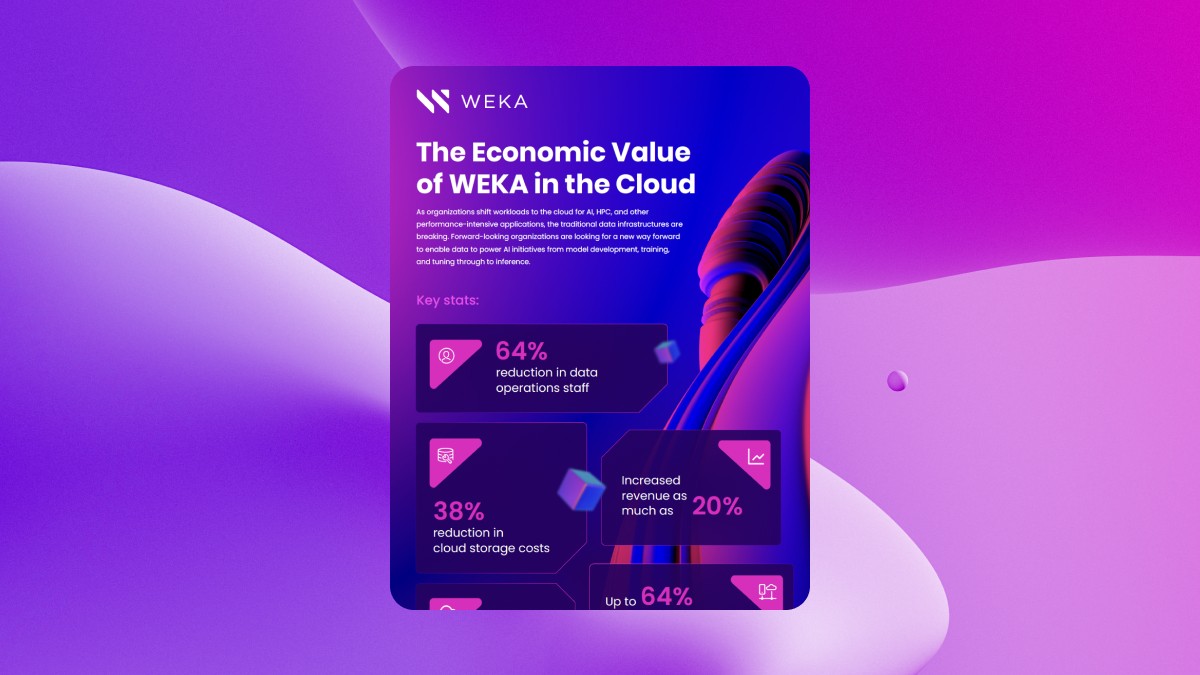What Is Cloud Portability and Interoperability in Cloud Computing? Does It Matter?

Wondering about portability and interoperability in cloud computing or just wondering what it is? In this blog we will explain what is cloud interoperability and portability, how it works, and how it relates to interoperability.
Cloud portability and cloud interoperability are different strategies that organizations employ to deal with the fact that they now have multiple cloud deployments with their IT estates. The use of each strategy depends largely on the business and specific technical needs of the organization. In a nutshell, portability in cloud computing refers to the ability to transfer applications and data between cloud computing environments, enabling cloud services migration from one cloud provider to another or between public and private clouds. Meanwhile cloud interoperability refers to the ability to ensure resources located in different cloud deployments can interact sufficiently to support the need of a specific application of business outcome
Why is cloud portability so important?
For many, looking back two or three decades in this industry is a bit of a stretch, but to understand why this is important to have portability one must appreciate the journey. You have no doubt heard it said that “the cloud is nothing more than somebody else’s computer and data center.” While that has been the running joke for several years, it is far from the truth. So, looking at IT in the 80s and 90s, if you were to lift and shift those data centers to an alternate location, set up network connectivity and call it cloud, how competitive would that solution be? Chances are, not very competitive at all. You see, back in those days vendor-lock-in was a very serious dilemma many customers were facing and a decision to go with one vendor over the next would typically mean you are stuck for at least five years. It was very difficult to move from platform to platform for a variety of reasons some of which included application, operating system, data format, or file system, etc. You would be hard pressed to find someone in IT back then who would say their data center systems were portable, unless referring to a laptop or portable computing system. As most are aware, cloud is not just someone else’s data center and computer, but typically racks and racks of identical hardware systems that serve as the foundation for services to be offered by the provider and solutions in its marketplace.
This model is only part of what makes cloud portability possible, the other is the solution vendor you choose to run on the cloud resources. One of the promises of cloud is flexibility, with flexibility should come portability as well, which the software you choose should support. With this background and knowledge, now let’s go into what cloud portability and interoperability is.
What Are Cloud Portability and Interoperability?
Some of the most critical questions in cloud computing involve challenges around moving resources (data, applications, etc.) between cloud systems. Organizations may build massively complex and expensive cloud infrastructures for any operations, from research to analytics and intelligence, leading to a moribund and hard-to-adapt system.
Since one of the significant benefits of cloud computing is flexibility, getting locked into an immobile, vendor-locked infrastructure is less than desirable. Therefore, these cloud-enabled organizations look for ways to build a cloud infrastructure that can move and grow as the company does.
Because cloud infrastructure is often highly unique and tailored to specific business applications, this challenge is much more significant than one might think.
Following that, there are two key concepts regarding how cloud computing platforms interact with one another as it relates to the movement of resources:
- Cloud Portability: Portability in cloud computing refers to moving a cloud system or resources from one location or infrastructure to the other with minimal issues. Rather than referring to the simple movement of cloud resources from one location to another, portability includes a comprehensive discussion of porting challenges like platform integration, interoperability between components, and the capabilities of the platform’s toolchain.
- Cloud Interoperability: Interoperability in cloud computing refers to the capacity of different cloud or computational systems to interact with each other through well-established technologies and interfaces.
There’s a slight overlap between the two, as some interoperability can contribute to effective cloud portability and vice versa. However, the differences impact how cloud computing infrastructures are designed and deployed.
What Are Different Types of Cloud Portability?
At the start of any discussion on portability in cloud computing should be a caveat: “portability” doesn’t refer to the ability to move data from one place to another. By that definition, the capability of downloading files from one cloud provider and uploading it to another would be considered portable.
But, there isn’t a singular point of cloud computing that we can point to and call the entirety of an infrastructure. While having the capacity to move an entire infrastructure is possible, this capability often comes from a subset of abilities that apply to different aspects of the platform.
Therefore, “portability” necessarily includes several layers of compatibility. Some of these layers can include:
- Programming Languages and APIs
- Application Portability in Cloud Computing
- Toolchain Compatibility (Operating Systems, Development Tools, Production Environments)
- Data Portability
That being said, there are several different types of portability:
- Data Portability in Cloud Computing: The ability to reuse data tools across different cloud environments. Data portability is critical to cloud data management, explicitly separating a data layer and an application layer. That is, data can be moved between cloud platforms and application environments relatively easily and remain independent of a given system–thus free to use in multiple contexts.
- Cloud Application Portability: The flip side of data portability is application portability, or the ability to move application components into different cloud and data environments. This portability can apply to broader movements between different cloud providers and application components’ movement to different systems.
The idea of portability, at the heart of all these areas of interest, is the ability to move cloud systems, in part or in whole, for reuse, vendor switching, or infrastructure upgrade.
What Are Different Types of Cloud Interoperability?
Cloud Interoperability, on the other hand, is a bit more straightforward. We’re not looking to move massive platforms, or even platform components, between different cloud infrastructures. Instead, the goal is to have different cloud systems that can “talk” to one another so that users can develop expanded or integrated applications.
Some types of cloud interoperability include:
- Cloud Application Interoperability: Simply put, application interoperability is the capacity of a platform to facilitate communication between different applications and application components. Cloud platforms are typically purpose-built to handle multiple applications, working together towards a bigger whole. Interoperability is the glue that makes this possible.
- Platform Interoperability: On a larger scale, platform interoperability refers to the ability of platform components to work together as a larger whole.
At this point, it’s essential to disassociate an application (a program or running piece of software) from a platform component. A platform component is a service that helps the platform operate in infrastructure while facilitating interoperability between applications hosted on the same platform. This might refer to development toolchains, operating systems, protocols for data management, and configuration management. - Acquisition Interoperability: Outside of the inner workings of platforms and applications, cloud platforms are often expected to work together–that is, across and between platforms. This kind of interoperability is essential to support services like inter-cloud platforms and application marketplaces.
Multi Cloud Portability
It may have become apparent that cloud portability and interoperability play a critical role when an organization uses multiple cloud environments, either for their platform or in conjunction with other providers and platforms.
Following that, the rise of powerful multi-cloud storage environments is shaping and is shaped by how we think of portability. A multi-cloud environment is one where an organization uses different cloud environments, typically across multiple vendors, to modularize and optimize different aspects of a cloud system. So, for example, you might use one provider for long-term cloud storage, one as an AI platform, and a third as a high-availability data cluster.
Portability is critical for multi-cloud systems. Some of the reasons include:
- Efficiency: Having platform and application components that can play together in different environments makes it much easier to work with them. You’ll find significant reductions in tasks like maintenance, troubleshooting, or porting to new, similar cloud environments.
- Vendor Flexibility: Perhaps the most critical reason, and the one that speaks most specifically to multi-cloud environments, is the ability to move from one vendor to the next. Multi cloud portability allows you to consider a broader range of potential vendors, avoiding lock-in and opening space for more optimized systems.
- Cloud Agnosticism: Vendor lock-in is a problem, but on top of that issue is the push for cloud-agnostic applications. The ultimate goal of many organizations is to develop cloud apps that aren’t beholden to any single cloud infrastructure–this allows much more control over an application and its development environment. Portability can render a cloud platform or application essentially cloud-agnostic.
Build Portable, Interoperable Cloud Systems with WEKA
WEKA powers some of the most complex, cloud portable workloads on the market in industries like manufacturing, life sciences, and machine learning. But our real strength is our flexibility.
With WEKA data platform, you can utilize portable, flexible cloud systems on tailored systems that we deploy for you. Conversely, you can deploy the same projects on almost any cloud vendor, from Microsoft Azure and Google Cloud Platform to AWS and Oracle.
With WEKA, you get the following features:
- Streamlined and fast cloud file systems to combine multiple sources into a single high-performance computing system
- Industry-best GPUDirect performance (113 Gbps for a single DGX-2 and 162 Gbps for a single DGX A100)
- In-flight and at-rest encryption for governance, risk, and compliance requirements
- Agile access and management for edge, core, and cloud development
- Scalability up to exabytes of hybrid cloud storage across billions of files
Contact our experts today to learn more about portable and powerful WEKA cloud systems.





